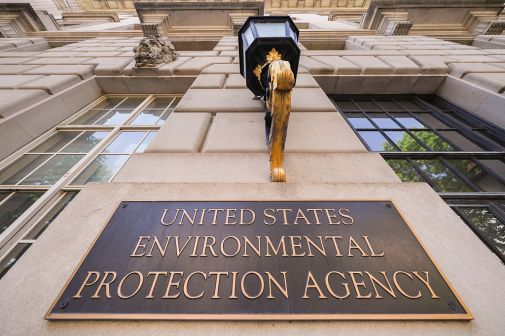Ex-White House official says improved artificial intelligence inventories could help OMB guidance

Improving “spotty” artificial intelligence use case inventories for federal agencies could help inform the Office of Management and Budget’s process of creating guidance for government use of the technology, a former White House official who worked on the executive order that established those disclosures said.
Lynne Parker, a former AI official in the Trump and Biden White Houses, told FedScoop in a recent interview that OMB could enhance its parameters for agency AI inventories by focusing on what those disclosures were intended to achieve: Improving public transparency, helping agencies see what others in the government are using, and informing policy guidance on responsible use of AI.
For example, Parker suggested structuring a call to agencies “to put use cases into various different kinds of buckets or to ask key questions that are important for informing the development of that policy guidance.”
“By thinking through those ultimate purposes, then you can structure the information that you’re requesting from the agencies such that it can actually serve those purposes,” said Parker, who is currently associate vice chancellor and director of the AI Tennessee Initiative at the University of Tennessee Knoxville.
Her comments come as OMB prepares to release guidance on federal government use of AI as part of its efforts to regulate and harness the capabilities of the budding technology. That guidance was expected to be released for public comment over the summer, according to a May 2023 announcement, but has yet to be published.
AI inventories are required to be published annually and publicly under a Trump-era order (EO 13960), but those disclosures so far have varied widely. Stanford’s RegLab found widespread lagging compliance in the first year of agencies’ use case inventories, and FedScoop reporting has found inconsistencies in reporting have persisted.
Those inconsistencies include variations in format, timeline, and level of detail, along with notable use case omissions. These issues have caught the attention of some members of Congress and were recently discussed in a House Oversight subcommittee hearing on federal agency use of AI.
Parker, who led the interagency committee that drafted the order, said the “spotty” and “inconsistent” nature of the disclosures is due in part to the timing of the executive order — which came in the late days of the Trump administration — as well as new priorities.
“With any administration, you come in with a lot of different priorities,” Parker said, adding that the Biden administration’s priorities required a lot of work by OMB and agencies in other areas. “They simply, I don’t think, had the cycles, nor were they being messaged by the administration that things like this executive order were a priority.”
The order, among other stipulations, created a framework for how the U.S. government should approach the nascent technology and established requirements for additional guidance and transparent disclosure of AI being used in the government through use case inventories. The inventories are required of all agencies except for the Defense Department, intelligence community agencies, and independent regulatory agencies.
Although the Federal CIO Council, which is led by OMB officials, did come up with guidance for the first year, Parker said, the effort “was, frankly, trying to check a box” and focused more on trying to have something reported, “as opposed to thinking through how the information that’s reported could be useful.”
The CIO Council’s most recent version of the guidance was more detailed than it was in the first year, which has helped some agencies. The Department of Energy, for example, said clarification from OMB on what constitutes a use case and what is considered research and development — which doesn’t have to be reported — allowed the agency to more comprehensively compile its inventory.
OMB didn’t respond to a FedScoop request for comment for this story. A White House official, however, recently told lawmakers on a House Oversight subcommittee that the inventories are important.
“The initiative to start cataloging those use cases was an important one and it’s very much work in progress,” said Arati Prabhakar, director of the White House Office of Science and Technology Policy. With respect to coming OMB guidance, she also said: “The Office of Management and Budget is working in a very focused manner on what they clearly understand is a priority.”
Parker pointed to other actions the order mandated that don’t appear to have been completed by OMB and Office of Personnel Management, too. The former was supposed to have issued a roadmap for their planned policy guidance on how to implement the principles the order outlined, and the latter was required to inventory rotational programs and make recommendations on how to increase the number of government employees with AI expertise.
OMB also didn’t respond to a request for comment on whether its forthcoming AI guidance will address that requirement from the order. OPM told FedScoop in July it could start compiling its report after a data call was complete and pointed to a memo on AI competencies for federal workers. It didn’t respond to a request for comment on the status of that work.
The coming OMB guidance, Parker said, is paramount – even more than inventories of use cases. “I think having consistent policies for how government shall ensure that those principles from the executive order have held – I think that is kind of more fundamental,” Parker said.






